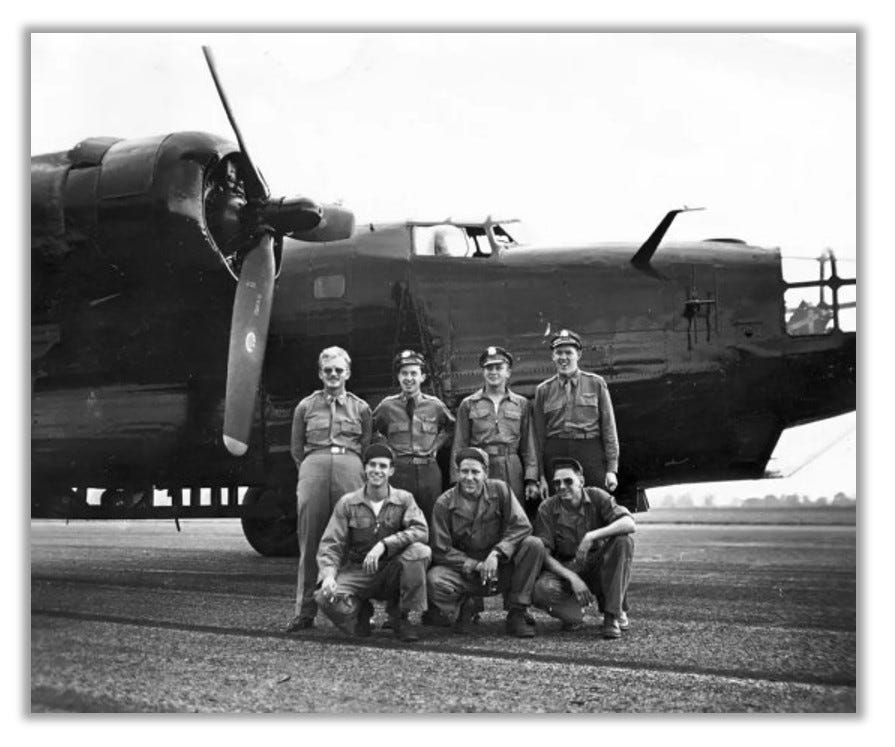TDIH: Operation Carpetbagger
Operation Carpetbagger resupplied underground resistance forces in Nazi-held territory. It became one of World War II’s best-kept secrets.
On this day in 1944, an American B-24 Liberator lands in England, having completed a top-secret overnight mission. The plane had been painted black, making it hard to spot against the nighttime sky. The B-24’s ball-turret had also been removed, replaced with a cargo hatch.
The objective of the secret flight was simple: Resupply underground resistance forces in Nazi-held territory. The flight was the first of many in an effort that would span months. Taken together, these missions came to be known as Operation Carpetbagger.
It became one of World War II’s best-kept secrets.
The missions were so covert that the crews themselves often had no idea where they were going or what they were carrying. “The pilot and I would get the coordinates,” navigator Eugene Polinsky explained. “None of the crew knew what the heck was going on. . . . .[During flight], we talked to each other by throat mics if necessary but not any other type of transmission.”
Some planes carried spies behind enemy lines, but the crew wouldn’t know their names, either, simply calling the agents “Joe” or “Josephine.”
The flights, after all, were dangerous solo flights made on moonlit nights. No fighter escort would save them. If the crew were shot down and captured, they should know as little as possible so they would have no information to give the enemy.
The logistics supporting Operation Carpetbagger constituted a huge, complicated effort organized by the Office of Strategic Services, predecessor to the CIA. The OSS communicated with resistance fighters through coded BBC broadcasts. On other occasions, they used homing pigeons.
“I flew two missions with pigeons,” gunner Robert Holmstrom remembered. “The pigeons were in a Quaker tubular container and had three days of food and the capsules and a pencil . . . . The carrier pigeon would fly back to London with the message—a week or 10 days later and then we’d deliver what they ordered. Socks, medicine, radios, hand grenades, throwaway pistols, bicycles, anything to help them get along.”
The process of dropping supplies, of course, was its own challenge. Drops were coordinated with the help of special two-way radios known as “S-phones.” A special combination of flashlights pointed at the sky would direct pilots to a drop zone. Supplies were dropped in color-coded boxes, indicating what was inside. Parachutes assisted the containers as they fell to earth.
Pilots flew at low altitudes, hovering as low as 400 feet when making a drop. Air speeds were reduced to 130 miles per hour—or even less. “Low level flying reduced the chances of being scanned by radar,” navigator Hewitt B. Gomez explained, “and also made cargo drops more accurate.”
The flights of Operation Carpetbagger were perhaps especially important in the weeks before and after D-Day. Indeed, missions peaked in July 1944 as the Allies fought their way through Normandy. In that single month, 397 missions departed, carrying 4,680 containers, 2,909 packages, and 62 agents dropped behind enemy lines.
The air crews who participated in Operation Carpetbagger came home after the war, unable to tell friends and family what they’d done. The missions were still a secret—and stayed that way for decades. Many veterans even had difficulty joining the Veterans of Foreign Wars because they were bound to silence.
Finally, in the 1980s, the missions were declassified. These brave veterans had risked their lives, helping to end World War II in Europe. Now, they were finally free to tell their stories.
Yet another story of bravery and sacrifice from the Greatest Generation.
Sources can always be found on my website, here.



Thanks TARA.. At least eventually ...SOME .. of the efforts and heroism get acknowledged in time. It's the same thing with the COLD WAR. Some " ALMOST" Nuclear war ... Special Ops that have yet to see the "light-of-day". Air Force families ... over 200 Air Crew shot down and KIA ... will maybe never know the missions their loved ones died on. Dept of DEFENSE .. to this day .. refuses to even acknowledge the entire Cold War itself ... officially .. by having a symbolic "CAMPAIGN Medal" for the memory "shadow boxes" of those that gave so much for so many years. Even Kosovo .. 4 total KIA ... has its Campaign medal. Have you EVER ... even seen "Cold War" ... on a tomb stone in our National Cemetery?
Wow. Amazing tactic and apparently successful though extremely dangerous. I wonder, were any were shot down? As always, thank you Tara.